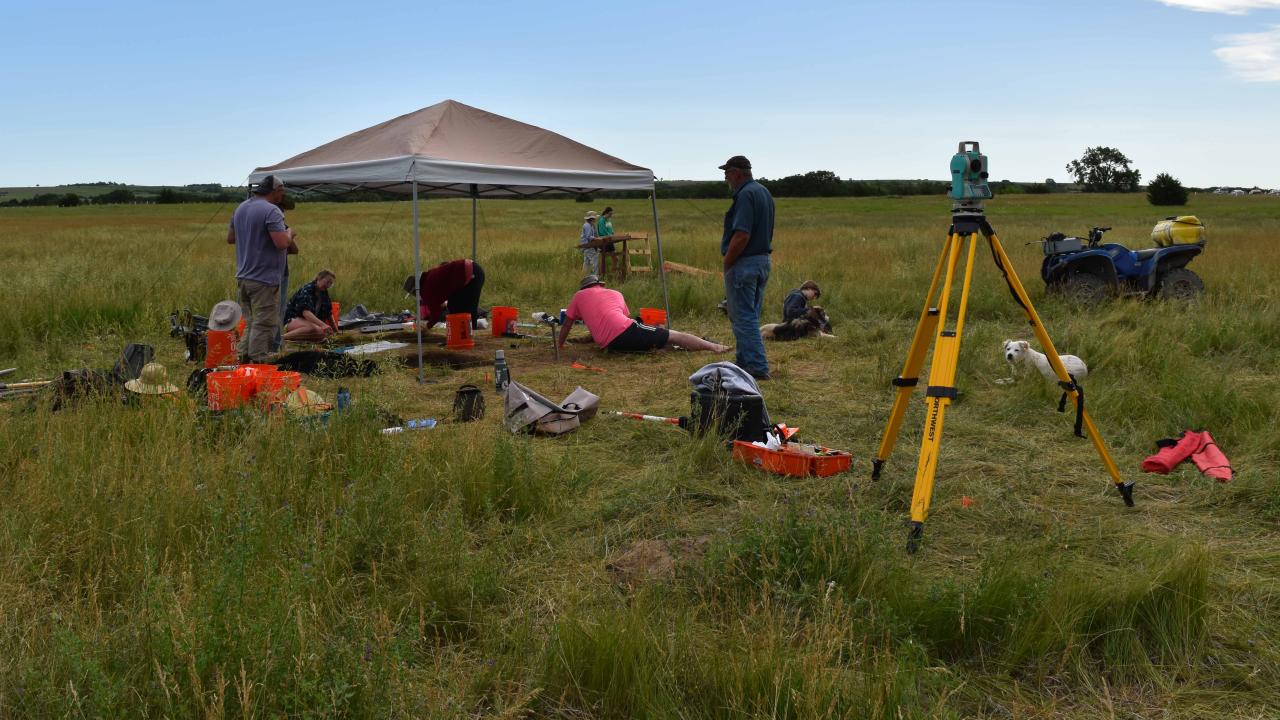Archaeology is defined as the scientific study of human history and prehistory through the excavation of sites and the analysis of artifacts and other physical remains. In simpler terms, it’s a window into the past – how other cultures and peoples adapted to life in often difficult conditions.
We often hear about the famous digs in the Nile Delta and other locations throughout Egypt from famous archeologists like Zahi Hawass and others, but closer to home lies the story of a civilization waiting to be re-discovered. The Oneota (or western Upper Mississipian) is the name given to the last prehistoric culture of the American upper Midwest and they are the study subject of Dr. KC Carlson, Augustana’s assistant professor of anthropology. Her research project, titled, “Oneota Expansion and Ethnogenesis on the Eastern Great Plains,” aims to determine how the early settlers of the Plains came to the area and how they lived among other cultures.
For the last decade, the focus of her research has previously been predominately on Paleoindian bison kills; however, she’s shifting gears to focus on tracking human interactions to environmental changes at a site in Nebraska that is approximately 1,000 years old.
The site in north central Nebraska is in Lynch, and it has seen multiple excavations – including one in 1959 that revealed lightly built houses dating back to the 13th century. As a result of a drought in the late 1200’s, the Oneota people migrated west, leaving behind a migration pattern, and pottery, that clearly depicts the way people lived in the wide open prairie. Part of Dr. Carlson’s research focuses on what the site in Lynch looks like underneath the ground and where to focus the data based on multiple excavations. We know that during the period of the Central Plains Tradition, life consisted of settled villages, farming, and hunting bison which played a big role in their diet. However, the pottery found around the plains tells an even more in-depth story. The Oneota had a distinct pottery style – large pots with capacities up to ten gallons that used shell as a temper. Their globe-shaped ceramic vessels had smoothed exteriors and other idiosyncratic details such as bone and shell hoes, and are indicative of not just their agriculture, but their way of life.
This is the fascination Dr. Carlson feels towards the field of anthropology and she imparts that to her students, in the classroom and in the lab. She says, “when I’m not teaching, I’m overseeing students while they analyze archaeological materials from the Lynch site.” However, the most fulfilling part of her job is seeing that “ah-ha” moment in her students’ faces. She adds, “Seeing a student “get it” is the best and what “it” is changes depending on the student.”
Dr. Carlson will be headed back to the Lynch site with a field school this summer. She’s “really excited to get back into the dirt and get back to work on some landscape analysis out there.” After all, there’s no better way of understanding our ancestors than by walking in their shoes.
